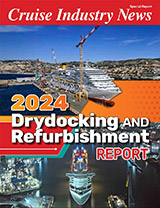The ruling by the U.K. Competition Commission approving the dual listing of P&O Princess Cruises (POC) and Royal Caribbean Cruises (RCC) highlights the issues facing regulators at the European Commission and Federal Trade Commission (FTC) later this summer. Among those concerns – all of which the U.K. Commission ultimately dismissed – was cruise pricing. The report stated that POC/RCC “might in principle be able to fill its ships with smaller discounts than when each company risks being undercut by the other – especially if it were able to persuade Carnival Corporation that it was in its interest to cooperate.” Likewise, there is “a potential concern that the merger might increase the likelihood of the remaining larger operators achieving a tacit ‘truce’ in the current capacity race.”
The merger and potential for collusion also raised the possibility that the Big Three would offer “lower prices to their customers, while still allowing the merged companies to retain, or even improve, their current levels of profitability” – thus undercutting competitors.
On the question of whether the cruise industry should be judged as a separate entity, or merely part of the overall leisure market, the Commission commented, “We have not been able to come to a single view on these issues. What we did all agree on, however, was that the existence of other types of cruises and the presence of the wider holiday market both constrained these companies’ actions and limited their commercial freedom.”
Regarding a concern which may draw the attention of FTC regulators, the U.K. Commission pointed to two regions – Bermuda and Glacier Bay where entry of new players may be limited because “incumbency is a major factor in deciding which has access.”
The U.K. report also noted a concern of potential importance to the EC’s decision on the proposed takeover of POC by Carnival Corporation: the impact on European shipbuilding. According to the report, the position of Euroyards (representing all the major cruise builders) is that the merger (between POC and RCC) “would significantly alter the development logic of the cruise shipbuilding market. It raised concerns that, post-merger, 80 percent of the demand for new cruise ships would come from two rather than three companies, which would give them greater negotiating strength against the shipyards. The merged company’s enhanced power in dealing with the leisure and travel industry as well as with the final passenger demand would most likely result in an overall reduction in newbuilding,” Euroyards told the U.K. Commission.



